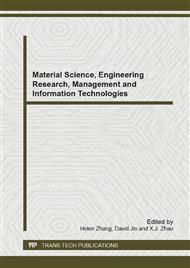p.195
p.199
p.208
p.213
p.218
p.222
p.231
p.235
p.239
Parameter Matching and Simulation for Powertrain System of Pure Electric City Bus
Abstract:
Powertrain system of pure electric city bus is composed mainly of battery, motor and transmission, it decide practically the acceleration performance of pure electric city bus. The method and principle of parameters design for dynamic system of pure electric city bus was investigated in this paper. Based on parameter matching for electromotor, cells and driveline, a performance simulation model was developed utilizing the dynamic simulation software of advanced vehicle simulator. The acceleration performance of pure electric city bus was simulated in CYC_ECE_EUDC drive cycle. Simulation result indicates that the acceleration performances of pure electric bus and maximum mileage were satisfied to the design requirement. Description that pure electric city bus powertrain system and simulation model were reasonably.
Info:
Periodical:
Pages:
218-221
Citation:
Online since:
June 2014
Authors:
Price:
Сopyright:
© 2014 Trans Tech Publications Ltd. All Rights Reserved
Share:
Citation:


